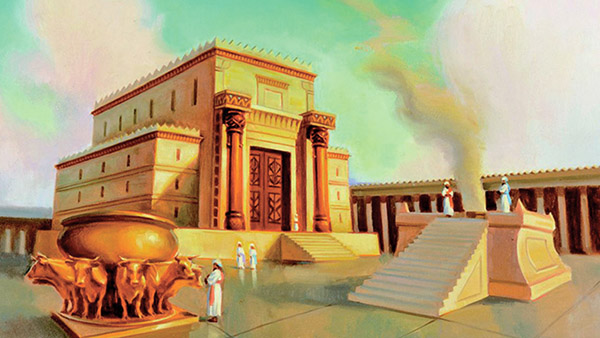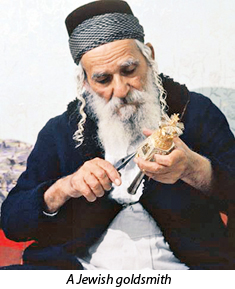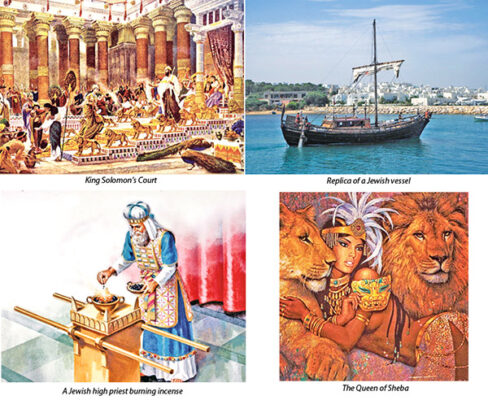When ancient Serendib lured Jewish ships-by Dishan Joseph

King Solomon’s Temple
Source:Dailynews

The resplendent island of Sri Lanka has been the envy of many for its strategic maritime position. This geographical position together with our natural resources drew the attention of traders from across the world. Ancient records show details of Arab trading vessels which were later followed by the Portuguese and Dutch. Subsequently the British arrived here lured by our tropical pearls and cinnamon. Many know these stages of our maritime history. The people of Israel had established trading links with ancient Serendib (the Persian name for Ceylon).
It is believed that by the 12th century there were around 3,000 Jews living on this island engaged in business. They had lived in peace, sharing in our prosperity. Jews had resided in Colombo, Kandy and Galle in a bygone era. It is said that a Jewish synagogue had existed along Steuart Place, Colombo 3.
King Solomon’s fleet
 Did King Solomon’s ships sail thousands of nautical miles to Ceylon? Ruling for 40 years, King Solomon was Israel’s wealthiest and visionary king. He was the son of King David who wrote many of the Old Testament Psalms and also killed the giant warrior Goliath. The Bible narrates how Solomon (Hebrew name Yedidyah, and in Islam – Suleiman) asked God for wisdom, and in turn was blessed with all things. His father King David desired to build the Temple on Mount Moriah, to keep the Ark of the Covenant, a gold chest containing the stone tablets of the Ten Commandments.
Did King Solomon’s ships sail thousands of nautical miles to Ceylon? Ruling for 40 years, King Solomon was Israel’s wealthiest and visionary king. He was the son of King David who wrote many of the Old Testament Psalms and also killed the giant warrior Goliath. The Bible narrates how Solomon (Hebrew name Yedidyah, and in Islam – Suleiman) asked God for wisdom, and in turn was blessed with all things. His father King David desired to build the Temple on Mount Moriah, to keep the Ark of the Covenant, a gold chest containing the stone tablets of the Ten Commandments.
The project was begun and completed by King Solomon. He was able to wield his powerful influence across Israel, and is said to have collected 18,125 Kg of gold (666 talents) in a single year. Extending his prudent diplomacy, he made an alliance with King Hiram, and further consolidated his reign over Israel. It was in this background of blissful abundance that he was ordered by the High Priests to procure cinnamon oil to be used at religious rites in the holy Temple. This custom is found in the Book of Exodus where Moses is directed by God to use cinnamon oil. The book of (1 Kings, Chapter 8) talks about the magnificent feast when the Ark of the Covenant was brought in the month of Ethanim (possibly July) and placed inside the holy Temple. The massive temple was built to a Phoenician design (a clan of people famous for their purple Tyrian dye, who can be traced to present-day Lebanon). After building the Temple, Solomon spent 13 years building a royal palace in Ophel, Jerusalem.
The location of Tarshish?

King Solomon is said to have sent out his experienced naval fleet to an island in the East. The East in that era referred to the Orient, including Asia. It is from these ports that he obtained his cinnamon oil, along with peacocks and animals. He procured sandalwood, pepper, ivory, pearls and gems – items found abundantly in Sri Lanka. The long return journey took three years, a most daunting voyage (Book of Kings, Chapter 1, verse 23). Solomon had an established naval fleet which empowered Israel to excel in commercial trading. Chapter 9 of 2nd Chronicles talks of Solomon’s alliance for trade.
For decades, theologians and historians have intensely debated about the location of Tarshish, on the ancient mariner’s map. Many opine it is either the ancient port of Ophir located in India or Galle in Serendib (Sri Lanka). Others opine it could be Carthage (the second largest city in the Hellenistic period) in the sea of Tunisia. Ophir in India is said to be on the Kerala coast, in the Trivandrum District. In contrast, the 10th century lexicographer David Abraham thinks Ophir was an exotic location in old Ceylon.
Psalm 72 says that Tarshish was an island far away; it had rivers and forests. The Old Testament book of Ezekiel mentions trade ties with Tarshish, and ships of commerce. Whether Sri Lanka was known to the ancient Jews as Tarshish we can’t confirm, but can we assume that King Solomon got all his tropical delights from here? We must realize that the name Tarsus in the New Testament episode of Saul (who converted as Paul the Apostle) is a different town in south central Turkey.

The old skill of trading in peacocks is attributed to the Dravidian people. Ancient Tamils used this skill, and to date the peacock is a revered bird in the Hindu kovils in India and Sri Lanka. In his book of 1863, Sir William Smith attests that the classical Tamil name for peacock ‘thogkai’ was assimilated into Hebrew lingo for peacock, as ‘thukkiyyim’. This can support the cause that Solomon’s fleet sailed to our exotic island which still has thousands of peacocks. In 1845, James Emerson Tennant, the presiding Colonial Secretary also supported the fact that Solomon’s fleet had traded in Galle. Samuel Bochart (French Biblical scholar) tries to convince us that the Kudiramalai area of old Ceylon was the port of Tarshish. The old Phoenicians also recorded their trade in Tarshish where they got ivory and gems, from an island. Some opine the Phoenicians lived in Galilee, Israel, in lands gifted to Hiram by King Solomon. Solomon probably acquired expensive sapphires and rubies from ancient Serandib, which directs us to another fact.
After building the Temple of Jerusalem, Solomon was instructed on sewing of the attire of the high priests (of the chosen Levite clan). Their ‘ephod’ (breastplate) had to be adorned with 12 gems, one for each tribe of Israel. These gems may have been taken from Tarshish. King Solomon’s throne (1 Kings, Chapter 10) was made with ivory and gold and inlaid with precious stones. The arms of the throne depicted two lions. Among the birds and animals engraved into the throne is a peacock. Did Solomon purchase these gems from Serendib?
The Queen of Sheba may have traded with the island of the East. She gifted Solomon with spices and precious stones. She was of Ethiopian descent (old Kingdom of Nubia) but some say she is from Saba (South of Saudi Arabia) towards Yemen. She is depicted in art with exotic animals and birds, including peacocks. Her chief merchant agent was a man named Tamrin.
Jews: from India to Ceylon
Certain parts of India still have an active Jewish population. The original Jews had come to Cochin and settled down in Kerala. They were dark skinned Malabar Jews. Their colony was called Anjuvannam, and their leader was Rabban. They lived here for 1,000 years. Later, in the 16th century, Jews of Spanish and British origin came to Madras and engaged in the lucrative diamond business. These migrants learnt to speak Malayalam and Tamil. The third wave of Syrian Jews came to the Kanyakumari region of India. Another segment of visiting Jews settled down in Karachi, Lahore and Peshawar until the Partition of India in 1947. Interestingly there is a small community of Telugu-speaking Jews claiming lineage from Ephraim.
The Jews of Cochin claim that their forefathers supplied King Solomon’s Temple with teak trees. The teak was shipped to Judea. It is believed that with time the Jews intermarried and shifted to Ceylon. The Jewish communities in 16th century Ceylon were subject to persecution by the Portuguese. In fear they abandoned their faith and surnames. Among them was a sub clan of Vishvakarma people. They were skilled blacksmiths, metalworkers, goldsmiths and stonemasons. These artisans embellished temples in India. It is said some goldsmiths assimilated into the Tamil community and identified as Thattar (opinions differ on this).
Even today, the Tamil-speaking Thattar caste exists and they are master goldsmiths. They were once moneylenders who made good profit. In addition, there were Burghers in Ceylon who came from Jewish lineage. J.B. Muller identifies some of these surnames as Altendorff, Felsinger, Joseph, Koch, Schneider, Martensteyn, Werkmeister and Oppenheimer. For the record, Ceylon had two Jewish Chief Justices, Sir Alan Rose and Sir Sidney Abrahams.
A Jewish memory
I was able to locate two other gravestones in the Borella cemetery in Colombo, when I went there with my friend Gunashantha. They had Hebrew inscriptions chiseled into the hard stone. One is of Joseph Bin Boim who died in 1888. The gravediggers said there should be a few more graves but we could not find them on this day. It is rare that someone would venture into the cemetery looking for Jewish graves. Sustaining a solitary flame of Jewish culture in Colombo is Chabad House. This former colonial bungalow is located opposite Cinnamon Red Hotel. Chabad House caters to a few folk from Israel and visiting Jewish businessmen. There was a Rabbi (Jewish priest) but I haven’t met him after the Covid pandemic. Was Tarshish an enigmatic port or a real trading paradise? The Jews of Ceylon have disappeared into history. Their ancient generations once enriched our island.








